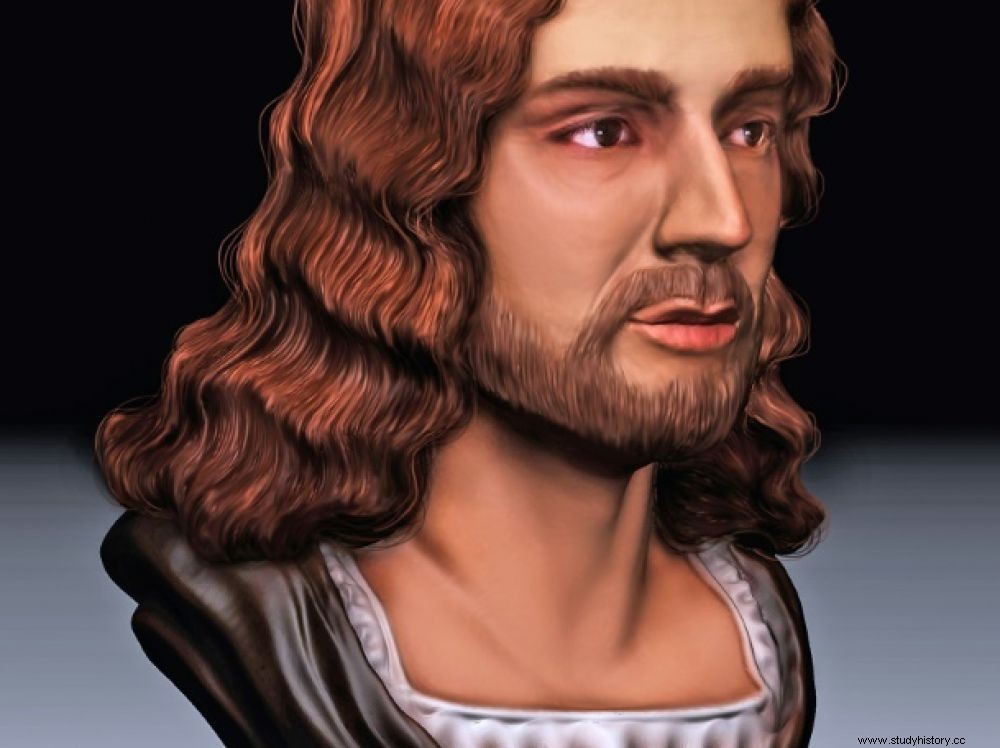A team from the University of Rome has succeeded in reconstructing the face of the famous painter Raphael in 3D from a plaster cast of his skull, further confirming the authenticity of his remains kept in the Pantheon.

Image released on August 6, 2020 by Tor Vergata University in Rome showing the 3D face of the painter Raphael reconstructed from a plaster cast of his skull
"The analysis of the plaster cast of the skull of Raphael (1483-1520) made in 1833 (when the artist's tomb was opened, editor's note) made it possible to reconstruct the face in 3D " of the Renaissance master who died prematurely at the age of 37 in Rome, where he is buried under the dome of the Pantheon.
A molding that questioned the specialists
Recurring doubts about the authenticity of the painter's remains have plagued his admirers for centuries. "Until now, we were not sure that the remains found and kept in the Pantheon were indeed those of Raphael “, recalls Professor Mattia Falconi, specialist in Molecular Biology at the University of Rome. During the research near the tomb of the painter, many other graves were found, including those of some of his students, as well as many pieces of skeletons. .
"Facial reconstruction is an interdisciplinary technique able to recreate, based exclusively on the morphology of the skull, the face of a person at the time of death ", explain Cristina Martinez-Labarga, professor of forensic anthropology, and Professor Raoul Carbone, 3D graphic designer applied to forensic sciences. This work has made it possible to establish "for the first time> " that "the remains preserved in the tomb of the Pantheon belong to the Renaissance artist, whose 500th death anniversary is commemorated this year ", explained the Department of Biology of the Tor Vergata University in Rome, which in particular resorted to comparisons with the self-portraits of the painter.
DNA will speak
Furthermore, this research - carried out by the Molecular Anthropology Center for the Study of Ancient DNA of the Department of Biology of the University of Rome, in collaboration with the Vigamus Foundation and the Raphael Academy, which manages the museum created in his birthplace" in Urbino (Umbria, center) - "open the way to future studies on the bone remains, intended (...) to determine certain characters of the character linked to his DNA ", such as eye, hair or skin color.
"The complete scientific work on 3D facial reconstruction will soon be proposed for publication in the (scientific) journal Nature “, still according to the press release, and a 3D impression of the life-size bust of Raphael will be permanently exhibited in the museum occupying his birthplace in Urbino. Mourned by his contemporaries, Raphael was entitled to a grandiose funeral at the Vatican upon his death. Raphael produced a large amount of major works, many of which are in the Vatican.
